A Beginner’s Guide to Appreciating Art
Part One of the Mastering Art Appreciation: From Novice to Connoisseur series

Introduction
“I may not know much about art, but I know what I like.”
If you’ve ever found yourself saying these words, you’re in good company. It’s a sentiment shared by many who feel that art is somehow beyond them—reserved for experts or connoisseurs. But art appreciation isn’t about having all the right answers or understanding every brushstroke. It’s about curiosity, openness, and letting yourself get lost in the experience. This series is an invitation to join me on a journey that transforms those initial, gut-level reactions into a deeper, more rewarding understanding of art.
As a long-time traveller and lover of art, I’ve explored some of the world’s greatest museums and studied painting, art history, and aesthetics. But I still remember when art felt overwhelming. That’s why I want to meet you where you are—whether you’re a newcomer to museums or an experienced gallery-goer looking to enhance your understanding. With a few tips, strategies, and a bit of shared experience, anyone can learn to appreciate art in ways that are meaningful and enjoyable.
In this first post of the series, I’ll walk you through some fundamental strategies for engaging with art and getting the most out of your museum visits. We’ll talk about how to prepare before you go, what to look for once you’re there, and how to reflect on what you’ve seen. You don’t need to have a degree in art to enjoy it. You just need an open mind and a willingness to explore.
So, let’s take the first step together. Appreciating art isn’t about knowing everything. It’s about embracing the journey, one painting, one sculpture, and one museum visit at a time.
Section I: Preparing for Your Visit
Visiting an art museum, especially one of the world’s renowned institutions, can be both exciting and overwhelming. With vast collections and centuries of masterpieces, it’s easy to feel a little lost. That’s why preparing ahead of time is crucial. Just a bit of groundwork can help transform your visit from a quick stroll through rooms full of paintings into a meaningful journey through history, culture, and creativity.
Do Some Research
Before stepping into the museum, take some time to learn about what’s inside. A little preparation can make a huge difference in how you experience the art on display. Here are a few tips:
1. Familiarize Yourself with the Museum Layout and Collections
Many museums have online maps and guides that detail their permanent collections and current exhibitions. Look at these resources to get a sense of the layout and identify which areas might interest you the most. If a museum is known for a specific collection—like the Impressionist gallery at the Musée d’Orsay or the Egyptian artifacts at the British Museum—make a mental note of where these are located.
2. Learn a Bit About Art History
While you don’t need to become an expert overnight, having a basic understanding of a few important art movements or styles can deepen your appreciation. Are you interested in the bold brushstrokes of Van Gogh or the meticulous detail of Dutch Golden Age paintings? Knowing what appeals to you will help you seek out those styles and discover new favourites.
3. Consider Reading or Watching a Short Video About the Museum
Often, a quick read-through of a museum’s history or a short video tour will introduce you to the museum’s highlights and help you navigate its vast collections more efficiently. It’s like having a sneak peek before the main event, so you’re not wandering aimlessly when you arrive. You will also know where to go if a sudden throng of spectators crowds a particular work of art. You can always cycle back once the crowd thins out.
Planning Your Visit
Once you’ve familiarized yourself with the museum and its collections, it’s time to think practically. Here’s how to make your visit both enjoyable and manageable:
1. Allocate Sufficient Time for Your Visit
The amount of time you’ll need depends on the size and scope of the museum. A small gallery might take an hour or two, while a behemoth like the Louvre or the Met could easily fill an entire day—or several days! If the museum is large, consider breaking your visit into two or more shorter sessions if you have the luxury of time. Alternatively, you can focus on just one or two sections of the museum to avoid burnout. As a rough guideline, plan for at least 2-3 hours for mid-sized museums and 4-6 hours or more for large ones.
2. Select Highlights if the Collection is Overwhelming
Many major museums have thousands of works, and seeing everything in one visit is nearly impossible. Identify a few must-see pieces in advance, especially if the museum has iconic works. This preparation will help you stay focused and prevent the dreaded “museum fatigue” that sets in after hours of non-stop looking.
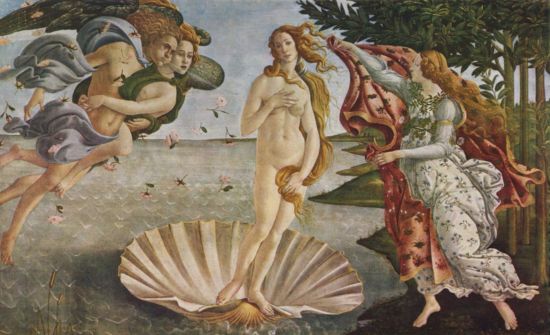
3. Personal Tip: Plan Your Route According to Your Interests
If there are specific works or galleries you’re eager to see, create a loose plan of attack. For instance, if you’re visiting the Uffizi in Florence and have always wanted to see Botticelli’s The Birth of Venus, head there first before fatigue or crowds set in. On the flip side, don’t feel pressured to see the “most famous” works if they don’t particularly interest you. Yes, the Mona Lisa is a must-see for many visitors to the Louvre. However, if you know the painting’s small size and the jostling crowds are likely to disappoint you, consider spending more time in front of The Madonna of the Rocks or Saint John the Baptist—works that may offer a more intimate encounter with Leonardo da Vinci’s genius.

The key is to make the visit your own. After all, art is a personal experience. There’s no “right way” to see a museum. Plan ahead, but don’t be afraid to change course if something unexpected catches your eye. A museum visit should be about the joy of discovery, not just checking boxes off a list.
Section II: Engaging with Art
When standing in front of a painting, sculpture, or installation, it’s natural to feel a range of emotions—curiosity, admiration, confusion, indifference, even disdain. A central part of enjoying art is simply to acknowledge these first impressions without judgement. It’s perfectly fine to like or dislike a piece at first glance. Many people hesitate to trust their own reactions as if there’s some “right” response they should have. In reality, there’s no wrong way to feel about a work of art. Allow yourself to notice what captivates you. What makes you want to move on quickly? What makes you pause in front of a piece, unsure of why you can’t quite tear yourself away?
First Impressions
A good starting point is to trust your instincts. If a piece of art speaks to you, acknowledge that. If it repels you or feels uncomfortable, that’s equally valid. Take a mental (or even physical) note of your initial response: “This is beautiful,” “I love the colours,” “This is confusing,” or “I don’t get this at all.” Whatever you’re feeling is a natural first step in understanding what appeals to you and why. The important thing is not to be critical of your reaction or to assume that your dislike (or admiration) is somehow wrong.
However, I would encourage you not to rush into making absolute judgments like, “This is terrible,” or “A child could do that!” Instead, try to explore what is generating this response. Ask yourself open-ended questions like “What makes me feel this way?” or “What draws me to this piece or pushes me away?” This approach isn’t about finding definitive answers but starting a dialogue with the art and yourself. One of the most effective strategies I’ve used over the years when visiting art museums with companions is to ask these types of questions in response to their initial reactions. Whether they react with enthusiasm (“I love that!”) or with distaste (“That’s ugly!”), I follow up with, “Why?” or “What, in your opinion, causes this reaction?” Not to challenge, but to foster curiosity. You can also do this for yourself—invite yourself to probe deeper into your responses.
Observing Details
Once you’ve thought about your first impressions, try to look more closely. Stand in front of a work and spend a few moments observing it in greater detail. What can you see that you missed at first glance? Take note of the brushstrokes, textures, or how the light falls across the canvas. Observe the colours, shapes, and lines. Are there any repeating patterns or motifs? Notice how the materials interact, how shadows and light play together, or how space and scale are manipulated. What might have seemed like a simple image from afar can reveal layers of complexity when you take a step closer.
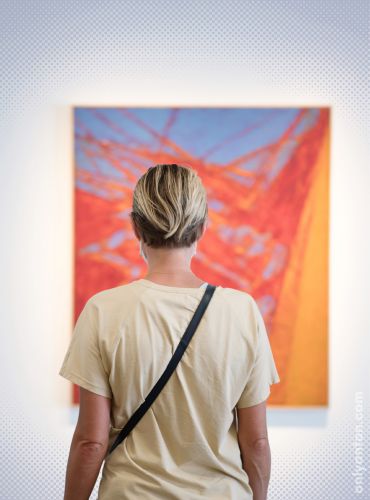
Now, step back, look from a different angle, or even squint your eyes. Squinting might sound strange, but it can help you simplify a composition and see the larger shapes, contrasts, and structures. When you squint, the fine details blur, leaving only the broad masses of colour and form. It’s a quick way to see the “bones” of a composition—to understand how the artist has organized the work’s underlying structure. Does your perception change when you step back, tilt your head, or move to one side? How does your experience shift as you view the piece from different vantage points?
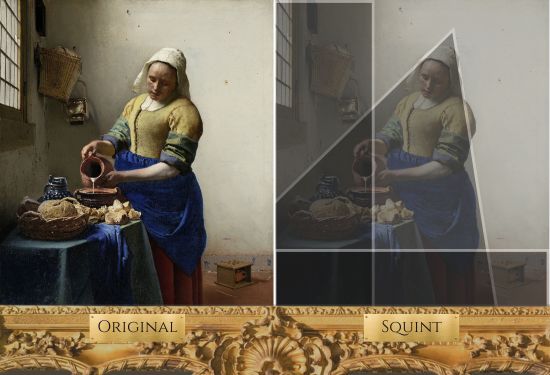
Engaging deeply with a work of art means taking the time to look—really look—and to notice what’s there beyond the surface. You don’t need a guide or an art history degree to do this. The art itself will reward your attention. By inviting yourself to spend a little more time in front of a work and asking these simple questions, you’ll start to see more than you ever thought possible.
Section III: Understanding Art
When it comes to deepening your appreciation for art, it helps to break down what you see into its fundamental components. This approach clarifies what’s in front of you and gives you a framework for engaging with other works of art. There are a few key elements to keep in mind: composition, technique, brushwork, colour, and the use of light and dark. Each plays a role in how a painting or sculpture communicates its message and influences how we experience it.
Elements of Art

Composition
Let’s start with composition, which refers to the arrangement of elements within the artwork. Imagine Vincent Van Gogh’s Starry Night. The swirling sky isn’t randomly placed; each line and curve directs your eye through the painting, leading you from the cypress tree on the left up to the bright moon and stars and down through the rolling hills to the quiet village below. The composition creates movement and energy, guiding you through the scene and making the night sky come alive.
Brushwork
Next, think about technique and brushwork. Van Gogh’s thick, expressive brushstrokes, often called impasto, add a tactile, almost three-dimensional quality to Starry Night. This technique makes the stars seem to pulse and vibrate, giving a sense of the artist’s emotional state. Even though the scene is calm and still, the heavy, swirling brushstrokes create a sense of intensity and urgency that wouldn’t be there if Van Gogh had applied the paint smoothly.

Colour
Colour is another powerful element. Van Gogh’s use of contrasting blues and yellows in Starry Night makes the sky feel vibrant and dynamic. Colours can set a mood, create harmony or discord, and draw attention to particular areas of a painting. Cool tones might evoke calm or sadness, while bright, warm colours can convey energy or joy. Knowing this, consider what emotions are evoked by the colours used in a piece. Are they muted and restrained, or bold and attention-grabbing?
Light & Dark
Finally, there’s light and dark, which does not just refer to whether a painting is set during the day or night. Artists use chiaroscuro (the contrast between light and shadow) to create depth, volume, and mood. In Rembrandt’s Self Portrait from 1628, the figure of the artist is silhouetted dramatically against the lightened background. Most of the young artist’s face is shrouded in shadow, with the light falling selectively on his right cheek and neck. The interplay of light and dark accentuates the texture of his skin and hair. The direction of his gaze also suggests an introspective quality. The obscured details of his face hint at a sense of mystery, while the illuminated parts capture the viewer’s attention, emphasizing the contrast between concealment and revelation.
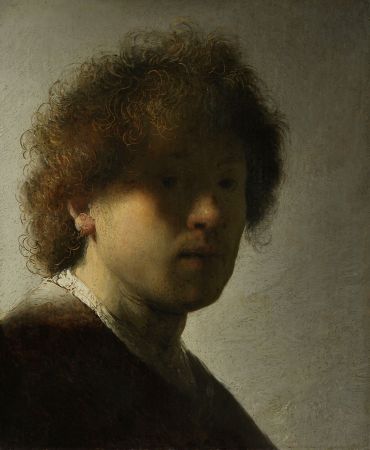
Together, these elements shape our experience of an artwork. By consciously noticing how they’re used, you’ll start to see the intention behind the artist’s choices and gain a deeper understanding of the work.
Context
While the elements of art tell us how a piece was made, the context tells us why. Knowing a little about the artist’s life, the historical period, and the cultural setting in which a piece was created can transform how we see it. For example, Picasso’s Guernica isn’t just a jumble of distorted figures and chaotic forms. Once you know that Picasso painted it in response to the bombing of a small Spanish town during the Spanish Civil War, the fragmented faces and anguished expressions suddenly take on a deeper, more haunting meaning. The art becomes more than mere shapes and lines. It becomes a powerful anti-war statement.
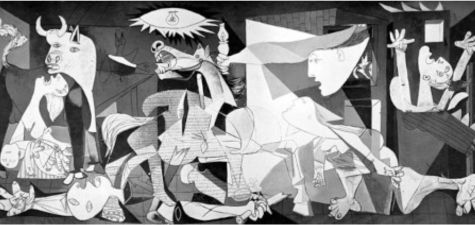
Similarly, consider Edvard Munch’s The Scream. It’s a famous image of raw emotion. However, understanding that Munch painted it during a time when he struggled with anxiety and depression adds layers of personal meaning. The swirling sky and distorted face aren’t just stylistic choices. They’re expressions of inner turmoil. Knowing these details changes how we interpret the painting’s impact.
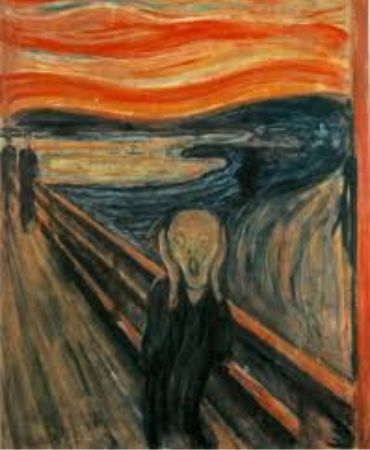
Even just a few contextual facts—such as the political climate, the artist’s upbringing, or events in their personal life—can change our perception of a work of art. To appreciate a painting, you don’t need to know everything about an artist or time period. Nevertheless, if a particular piece catches your eye, learning more can open up new ways of seeing it. In this way, context bridges the visual and the conceptual, enriching our appreciation by connecting what we see with the world beyond the frame.
Section IV: Navigating the Museum
Even the most enthusiastic art lover can feel overwhelmed by the sheer scale of some museums. Large institutions like the Louvre or the Metropolitan Museum of Art can feel like labyrinths of art, history, and culture. To make the most of your visit, have a few strategies for navigating the space effectively and ensuring that your experience is both enriching and enjoyable.
Practical Tips
Start by familiarizing yourself with the museum map and any available visitor guides. Most museums have detailed maps highlighting key areas, and some even offer suggested routes based on your available time. Wait to start following the rest of the crowd. Spend a few moments at the entrance looking over the layout. Decide which sections are your priorities, such as specific collections or exhibitions that caught your eye during your initial research. If you have a list of must-see works, mark them on your map to efficiently plot your course.
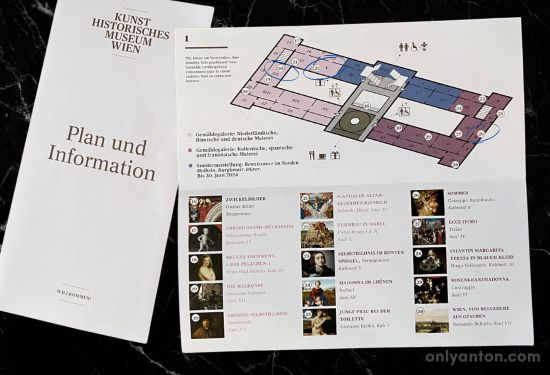
Another practical tip is to pace yourself and take breaks. Many museums are larger than expected, and you can quickly lose track of time. Aim for quality over quantity by taking your time with a few works rather than trying to see everything at once. Pause at a café for a refreshment or find a quiet corner to sit and reflect on what you’ve seen so far. Some museums, like the Getty in Los Angeles or the Uffizi in Florence, have beautiful outdoor gardens that offer a chance to recharge. Others, like the Rijksmuseum in Amsterdam, have comfortable seating within galleries where you can relax and continue enjoying the art from a different perspective.
Engaging with Exhibits
Today, many museums go beyond traditional displays, offering interactive exhibits that encourage a more hands-on experience. Explore any touchscreens, videos, or digital displays available. For example, at the Van Gogh Museum in Amsterdam, some exhibits allow you to see X-rays of the paintings, showing hidden layers beneath the surface. Use these interactive features to gain new insights into the artwork and the artist’s creative process.
When available, consider joining a guided tour or using an audio guide. Tours led by knowledgeable docents can provide a wealth of context and background that you might miss on your own. If a guided tour feels too structured, opt for a self-paced audio guide instead. Many museums offer these in multiple languages, and some even include child-friendly versions. The audio commentary can enrich your experience by pointing out key details and sharing stories that bring the art to life.
Finally, embrace your curiosity. Ask questions when engaging with museum staff, read the informational plaques next to the artwork, and take the opportunity to learn something new. The goal is not just to see but to understand and connect with the art more deeply. Remember, every piece in a museum has been carefully curated, often with layers of meaning waiting to be uncovered.
Section V: Reflecting on Your Visit
Taking time to reflect on your museum visit is a powerful way to solidify your experience and deepen your appreciation for the art you encountered. After all, visiting a museum isn’t just about seeing. It’s about discovering what resonates with you, what lingers in your thoughts, and what new perspectives you gained. By actively reflecting, you can capture these impressions and expand your understanding long after you’ve left the museum.
Journalling
One of the best ways to reflect on your visit is through journalling. Take a few minutes after your visit to jot down your thoughts. What surprised you? Which pieces left a strong impression? What did you love, and what left you cold? You don’t need to write an essay. Sometimes, a few bullet points are all it takes to remember your impressions. Putting your thoughts on paper can transform vague feelings into concrete insights.
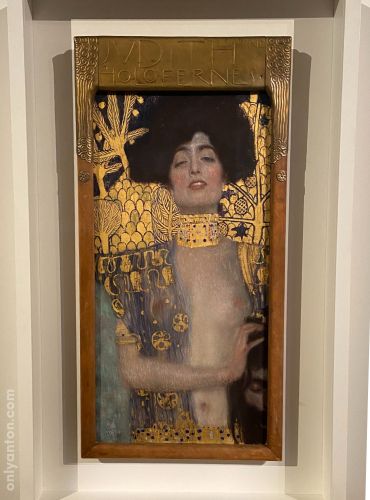
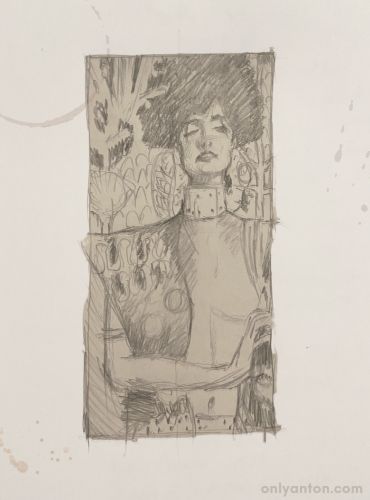
If you’re artistically inclined, or even if you’re not, try drawing your favourite piece. You don’t need to be a skilled artist. Even a simple doodle can help you connect with the art in a new way. Why is this beneficial? When you attempt to recreate an artwork in your own way, you start to notice details you may have overlooked initially—the sweep of a line, the play of light and shadow, the way the composition flows. It’s a way to see more clearly and to make the art your own, translating it into your personal visual language.
Discussion
Another effective way to reflect is through discussion. Sharing your experience with friends or family can offer new perspectives. You might find they noticed things you missed or had interpretations that challenge your own. These conversations can expand your appreciation by introducing diverse viewpoints and interpretations.
If you don’t have someone to discuss art with in person, consider joining an online community. Many forums, social media groups, and websites are dedicated to art appreciation. Engaging in these communities can be rewarding, as you’ll find people with varying levels of knowledge and interest, from fellow beginners to seasoned art aficionados. Don’t be afraid to ask questions or share your reflections. You might be surprised at how a single comment or insight from someone else can change how you perceive an artwork.
Personal Reflection
Finally, take a moment for personal reflection. Consider asking yourself a few questions: “How did this visit change my perspective on art?” “What did I learn about myself from this experience?” “Did any piece challenge my assumptions or leave me thinking in a new way?” These questions help you articulate the impact of your visit, turning it from a passive experience into an active engagement with art.
Reflecting on your museum visit is more than just a way to remember what you saw. It’s a means to deepen your connection to the art and to yourself. By journalling, discussing, and reflecting, you transform your visit into a personal journey that enriches your understanding of art and its place in your life.
Conclusion
Art appreciation is a journey—one that begins with an open mind and a willingness to explore. In this post, we’ve covered some foundational steps to help you get the most out of your museum visits. From preparing for your visit by doing a little research and planning your route to engaging deeply with art by observing details and reflecting on your experience, these strategies are meant to guide you in developing a richer connection to the art you encounter. Remember, there’s no single “right” way to experience art. What matters most is your personal response and the insights you gain along the way.
Art appreciation is not a destination but a skill that develops over time. Each museum visit is an opportunity to refine your tastes, expand your understanding, and see the world through the eyes of different artists. Whether you’re just starting out or looking to deepen your art journey, keep exploring and questioning. Above all, keep enjoying the experience. Take your time, honour your responses, and let your curiosity lead the way.
What About You?
What was your most surprising museum experience, and why did it stand out? Was there a particular piece of art that challenged your expectations? I’d love to hear your thoughts and stories in the comments below. Share your favourite art museums or the works of art that left a lasting impression on you.
If you enjoyed this post, consider returning to Only Anton to stay updated on the next part of the series. In it, we’ll explore the fascinating world of art composition and how it shapes our perception. Let’s continue this journey of mastering art appreciation together—one step, one museum, and one painting at a time.
Further Reading and Resources
These resources offer advice and practical information on making the most of museum and gallery visits.
Related Posts on Only Anton
- Sublime Travel: Making Your Trip Awesome, Not Awful: Learn how to incorporate awe-inspiring moments into your travels with practical tips on balancing the sublime for memorable journeys.
- Best Things to Do in Prague: History, Culture, and Dining: Discover the best things to do in Prague, from historic sites to local cuisine. Find valuable travel tips in this must-read guide.
Books
- John Berger, Ways of Seeing (1972): A seminal book on art criticism and how we perceive visual culture, this classic explores the complex relationship between art, context, and the viewer’s gaze. Look for it online, at your local library, or get a copy here.
- E.H. Gombrich, The Story of Art (1950): This book is a highly accessible introduction to art history. It provides a comprehensive overview of key art movements, artists, and styles. It is perfect for beginners looking to build a solid foundation in art appreciation. Find it at a local library, online, or purchase a copy on Amazon here.
- Susan Woodford, Looking at Pictures (2018): This book is an engaging guide to understanding art. It breaks down elements of composition, colour, and context to help readers see and interpret visual art more meaningfully. Available online, at a nearby library, or get your copy here.
- What Is Art For? by Ellen Dissanayake (2020): An exploration of art’s role in human evolution and how understanding this purpose can deepen our appreciation of visual culture. Find it online, at a library, or buy it here. [https://a.co/d/dITMa7K]
- Sarah Thornton, Seven Days in the Art World (2008): This book offers an insider’s view into the global art scene, exploring the processes and people behind the art world’s inner workings. It is great for those curious about the contemporary art market and its major players. Read it at a local library, only, or get a copy here.
- Michael Bird, Vincent’s Starry Night and Other Stories: A Children’s History of Art (2016): A beautifully illustrated book that introduces art history through storytelling. Although intended for younger readers, it’s a delightful resource for adults looking for a more narrative approach to art appreciation. Take a look at a library, online, or get a copy here.
Articles and Essays
- “How to Visit an Art Museum” by Ben Street, HENI Talks, YouTube: A thoughtful guide on how to make the most of a museum visit, with tips on avoiding common pitfalls and finding personal meaning in art. Find the video on YouTube here.
- “A Guide to Slow Looking,” Tate: A practical guide encouraging visitors to spend more time with fewer artworks to develop a deeper, more personal connection. Find the article here.
Websites and Online Resources
- The Metropolitan Museum of Art’s Heilbrunn Timeline of Art History: An extensive online resource featuring essays, images, and interactive timelines that cover the global history of art.
- Khan Academy’s Art History Resources: An educational platform offering free courses on art history, from Ancient Egypt to Modernism. Ideal for those seeking structured, academic-level content.
- The Museum of Modern Art (MoMA), Art Terms: A practical guide encouraging visitors to spend more time with fewer artworks to develop a deeper, more personal connection.
- “The Art of Slow Looking” Podcast, Tate: An exploration of how slow looking can transform our understanding of art, featuring insights from experts and visitors.
- Smarthistory: This is an open-access art history resource featuring essays, videos, and high-resolution images of works from museums around the world. It covers a wide range of time periods and styles, making it a valuable tool for learners at all levels.




